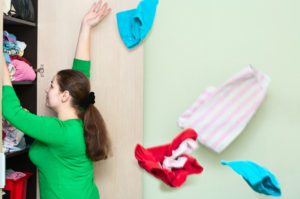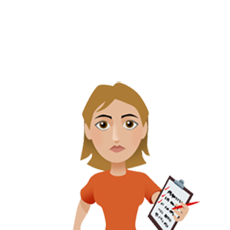Organizing 101: The 3 M’s Will Help You C.O.P.E.

In a world filled with so much information, literally at our fingertips, how do we narrow our focus to practical and applicable tools for our daily lives? And how is that different in the world of ADHD?
The solution I use with my clients: the 3 M's will help you COPE.
Clutter represents deferred decisions. Nowadays, we move so fast we are often distracted. We can't or don't exercise the discipline needed to make quick, in-the-moment decisions and follow-through on making them happen. This is especially true of the flood of stuff in our homes. Consequently, surfaces are covered and piles accumulate.
When we do decide to buckle-down and get organized, many of us lack the ability to create order out of chaos, to choose the right system of containers & tools. We are overwhelmed by the mere thought of where to start.
To reduce clutter and create some breathing room, set a goal to tackle the 3 M's: Minimize, Maximize, & Maintain.
Minimize
Find some peace in your hectic life, you must minimize. This is easier said than done with ADHD in the mix, so consider finding a “Body Double” who will help you purge, and then you do the same for her. This can be a friend, or a paid organizer. Think in terms of 4 piles: trash, recycling, keep or donate.
Article continues below...
Want to Motivate Kids?
Download a free tipsheet "The Parent's Guide to Motivating Your Complex Kid" to help your child find the motivation to do... anything and everything!
Maximize
Learn to maximize the way space is used and take advantage of the available space you have. Start small, with one area at a time, and tackle your home surface by surface, closet by closet.
Maintain
Order is a constant process, fluid and changeable, and there is joy in the journey. When we continually minimize the amount of items in a space, maximize the use of the available space, and pay attention to keeping it maintained, we have a plan to keep things organized and peaceful.
Once you've decided what to keep, and are on the path to maintenance, it's time to take things to the next level of detail and C.O.P.E:
- Categorize (group like items together)
- Order (put things in order)
- Proximity (put things near where they will be used)
- Ease of Use (make sure things are easy to access)
Don't underestimate how simple this sounds—it's really effective to put a little bit of extra thought into where and how to store items you decide to keep.
Now, some people would prefer to have someone else handle organization, leaving them free to do other things that are more natural and enjoyable, and there's no shame in that! When you have ADHD it can be particularly helpful to have support and assistance in the process. Just in case you want to tackle organization on your own – and remember to consider a body double if you do -- here are a few more tips to keep you on track:
- Set boundaries around when, where, and for how long you are going to “get organized.” Set an appointment with yourself, use a timer, and be specific about where you are going to focus your energy. If you tend to get caught in “zigzag organizing” -- jumping from room to room or area to area – then take on two projects at a time and when one gets boring, move to the other. But limit yourself to only those projects! Set a timer for 15 minutes before the end of your scheduled session, and begin to straighten up so that you can leave the space livable until your next session.
- Start with the obvious by working with items that are already out in the open, on the floor, countertops, entry-ways, spilling out of baskets/containers, etc. Do not go pulling stuff out of drawers and closets before you have cleared out the obvious clutter. It could lead to overwhelm and possibly abandoning the effort entirely.
- Set yourself up for success by making sure you are free from distractions. Turn off the phone, get coverage for the kids (or give them a job), don't plan to leave in the middle of the process for another appointment, and be sure to have supplies like sorting containers, big trash bags, sticky notes for labeling, a big black marker, cleaning stuff, and the vacuum for those dust bunnies that will pop up during the process!
- Make sure the organizing session is fun by playing inspirational music (whatever that means for you), making sure there is enough light in the space to see what you are doing, having scheduled breaks with special goodies to snack on, and having a reward in place for when you complete the task!
Finally, remember that there is no shame in asking for help, either from a professional or from a trusted friend who will keep you on track, without judgment. It helps make organizing happen more quickly, and with greater success.
The simple skills outlined above are applicable to numerous areas of life, not just getting organized. Learning them and teaching them to your children will have wide-reaching and lasting benefits. Good luck and Happy Organizing!


